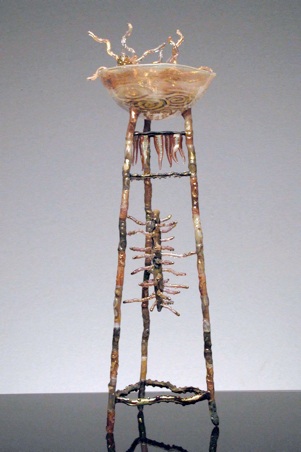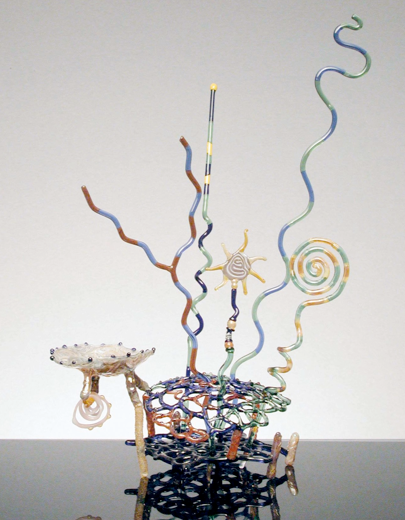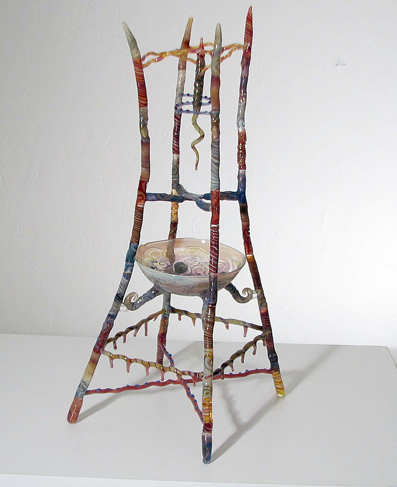Divinatory Vessels
For lack of a better expression, I refer to this body of work as Divinatory Vessels. They embody a rich, even extravagant sensibility, inspired in part by a particular museum visit to see ritual implements used for divination in tribal African cultures. The variety of forms and their multidimensional functions fascinated my adult self as much as they had when I was younger
The basic nature of lampwork technique is additive, in that small elements are joined together spontaneously with the torch flame. This method lends itself to fortuitous combinations of forms that reflect the heat of my moment-to-moment creative process. In my own way, I experience a shamanic journey of descent, discovery and healing affirmation in these works, which are strongly influenced by my research into ritual and worship objects used in traditional and tribal societies around the world. My annual pilgrimage to the Gem & Mineral Show in Tucson also rekindles my fascination with tribal sculpture and ornament.
Respecting the historical sovereignty of these societies, my intent is not to bluntly co-opt the forms of other cultures for my own purposes. I prefer to experience essential lessons from the varieties of human experience, to resonate with visionary and ecstatic states largely unexplored in our contemporary culture, and to map elements of these journeys through this work. Therefore they reflect my own experience primarily. The intent of these pieces is to spur the viewer in some way on their own journey of discovery, and even of personal ritual. Many of these pieces invite the participation of the owner to rearrange elements, reflecting their own ongoing aesthetic exploration and relationship with the work. The vibrant, complex energy of these pieces is both soothing and dynamic, otherworldly (even multidimensional) yet accessible to daily experience.
The writer and painter Henry Miller made an interesting observation that relates to these pieces, I think:
“There’s never any end to what one can see—just looking, not trying to observe anything in particular. Always, in such moods, comes that sublime moment when you ‘suddenly see.’ And you laugh all over, as we so aptly say… Nearly all the ‘primitives’ give us this sense of joy and wonder. With these masters of reality, who are usually anything but primitive, we are less concerned with how they viewed the world than how they felt toward it. They make us leap forward to embrace what we see; they make things almost unbearably real.”


